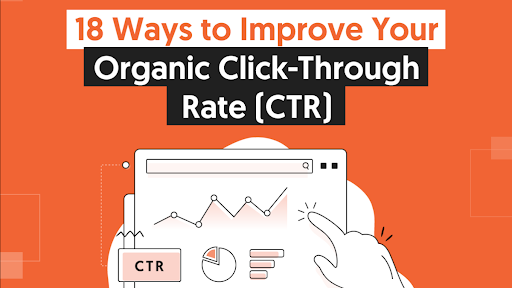Boost Your Brand Understanding With Strategic CTR Manipulation Press Release Campaigns
Boost Your Brand Understanding With Strategic CTR Manipulation Press Release Campaigns
Blog Article
Improving Sales Through Strategic CTR Control
In the competitive landscape of electronic marketing, recognizing the subtleties of click-through rates (CTR) is important for driving sales. Strategic adjustment of CTR can lead to enhanced individual involvement and conversion prices, ultimately profiting the lower line.
Understanding Click-Through Rate
 Click-through price (CTR) works as a critical statistics in assessing the effectiveness of electronic advertising campaigns. It represents the proportion of individuals who click a particular web link to the complete number of users that check out a promotion, page, or e-mail . Expressed as a percentage, CTR provides beneficial understandings right into target market interaction and the relevance of the material being promoted.
Click-through price (CTR) works as a critical statistics in assessing the effectiveness of electronic advertising campaigns. It represents the proportion of individuals who click a particular web link to the complete number of users that check out a promotion, page, or e-mail . Expressed as a percentage, CTR provides beneficial understandings right into target market interaction and the relevance of the material being promoted.A high CTR shows that the web content reverberates well with the target market, motivating them to do something about it. On the other hand, a low CTR might signal that the campaign is misaligned with customer assumptions or that the call to activity is inadequate. Several elements can affect CTR, consisting of the high quality of the ad copy, the good looks of visuals, and the placement of links within the material.
By assessing CTR information, businesses can identify which techniques are working and which require change. As a foundational metric, CTR plays a vital role in the iterative process of electronic advertising, leading the way for a lot more reliable approaches and much better engagement with potential consumers.
Importance of CTR in Sales
A solid click-through rate straight correlates with sales performance, highlighting its relevance in the sales channel. CTR acts as a critical indication of just how properly a marketing project transforms potential customers' interest right into actionable actions. A high CTR symbolizes that your audience discovers your messaging compelling, which is necessary for driving website traffic to your sales web pages.
Moreover, a raised CTR can improve brand exposure and authority. When potential consumers involve with your e-mails or ads, it fosters an impact of trust and importance, establishing your brand name as a go-to option in the marketplace. This can cause increased client loyalty and repeat purchases, even more strengthening sales figures.
Furthermore, a robust CTR can positively influence search engine positions and advertisement placement prices. Greater interaction prices signify to internet search engine and advertising and marketing platforms that your material is beneficial, enabling you to take advantage of better positioning and potentially lower costs for clicks.
Strategies for Effective CTR Control
Efficient adjustment of click-through prices (CTR) involves a strategic blend of engaging web content, target market involvement, and data-driven optimization strategies. To begin, crafting attention-grabbing headlines is essential. A well-structured headline not only stimulates passion yet likewise urges customers to click via. Including power words and addressing the audience's discomfort points can substantially boost involvement.
Following, using high-grade visuals can better boost CTR. Video clips, infographics, or photos should be attractive and appropriate, providing an aesthetic depiction of the material that lures clicks. In addition, making use of convincing and clear calls-to-action (CTAs) can guide customers toward the desired activity. CTAs ought to be succinct, action-oriented, and plainly positioned within the material.
 Segmenting your target market is another important method. CTR Manipulation. Tailoring content and uses to specific demographics ensures that the messaging resonates more deeply, increasing the chance of clicks. A/B testing different elements, such check my reference as ctas, headlines, and images, additionally supplies useful insights right into what drives greater CTR
Segmenting your target market is another important method. CTR Manipulation. Tailoring content and uses to specific demographics ensures that the messaging resonates more deeply, increasing the chance of clicks. A/B testing different elements, such check my reference as ctas, headlines, and images, additionally supplies useful insights right into what drives greater CTRAnalyzing User Behavior
Recognizing user habits is important for optimizing click-through prices and boosting general advertising and marketing strategies. By assessing exactly how customers connect with web content, online marketers can recognize patterns, choices, and pain factors that significantly influence engagement. This evaluation includes examining metrics such as time spent on page, scrolling actions, and click pathways to determine what resonates with the target market.
Division is vital in recognizing individual actions, as various demographics show special tendencies. As an example, younger individuals might be attracted in the direction of visually abundant content, whereas older target markets might choose clear and straightforward messaging. A/B testing can additionally improve insights by comparing variants in design, messaging, and call-to-action aspects, permitting marketing professionals to discern which choices produce higher interaction rates.
Furthermore, checking user comments with studies and social media sites can supply qualitative information that enriches quantitative findings. Comprehending the emotional triggers that drive individual choices is just as important; leveraging this knowledge enables the development of engaging web content that urges clicks.
 Eventually, an extensive analysis of individual behavior not just aids in boosting click-through rates but additionally informs wider advertising strategies, making certain that campaigns are customized to satisfy the advancing requirements of the audience.
Eventually, an extensive analysis of individual behavior not just aids in boosting click-through rates but additionally informs wider advertising strategies, making certain that campaigns are customized to satisfy the advancing requirements of the audience.Determining CTR Success
Measuring the success of click-through prices (CTR) requires a methodical approach that improves insights gotten from user habits evaluation. To efficiently gauge CTR performance, organizations should develop clear objectives that line up with their overall advertising and marketing objectives. This structure makes it possible why not try these out for companies to track development gradually and make informed changes.
Key performance indicators (KPIs) should be defined, consisting of target CTR percentages based on market benchmarks. Normal surveillance of these metrics is critical, as it permits the identification of anomalies and trends. By segmenting information according to demographics, tool types, and interaction degrees, organizations can pinpoint which segments do best and customize their strategies appropriately.
A/B testing provides another useful device in gauging CTR success. By try out different ad formats, headings, and phones call to activity, organizations can identify one of the most effective combinations that resonate with their target audience. Moreover, examining the relationship in between CTR and conversion prices gives deeper insights into the effectiveness of advertising efforts.
Ultimately, a comprehensive method to measuring CTR success not only boosts project efficiency however likewise notifies future techniques, driving sustained organization development and enhanced client engagement.
Conclusion
In final thought, strategic control of click-through prices (CTR) serves as a crucial element in enhancing sales efficiency. Continual evaluation of user actions and dimension of CTR success facilitate ongoing Find Out More optimization of advertising and marketing techniques. CTR Manipulation.
Strategic adjustment of CTR can lead to enhanced individual involvement and conversion rates, ultimately profiting the lower line. Conversely, a low CTR may signify that the project is misaligned with individual expectations or that the telephone call to activity is ineffective.Effective manipulation of click-through prices (CTR) entails a strategic blend of compelling material, targeted audience interaction, and data-driven optimization strategies.Gauging the success of click-through prices (CTR) calls for a systematic approach that develops on insights acquired from individual habits analysis. Continuous analysis of individual habits and measurement of CTR success assist in recurring optimization of advertising approaches.
Report this page